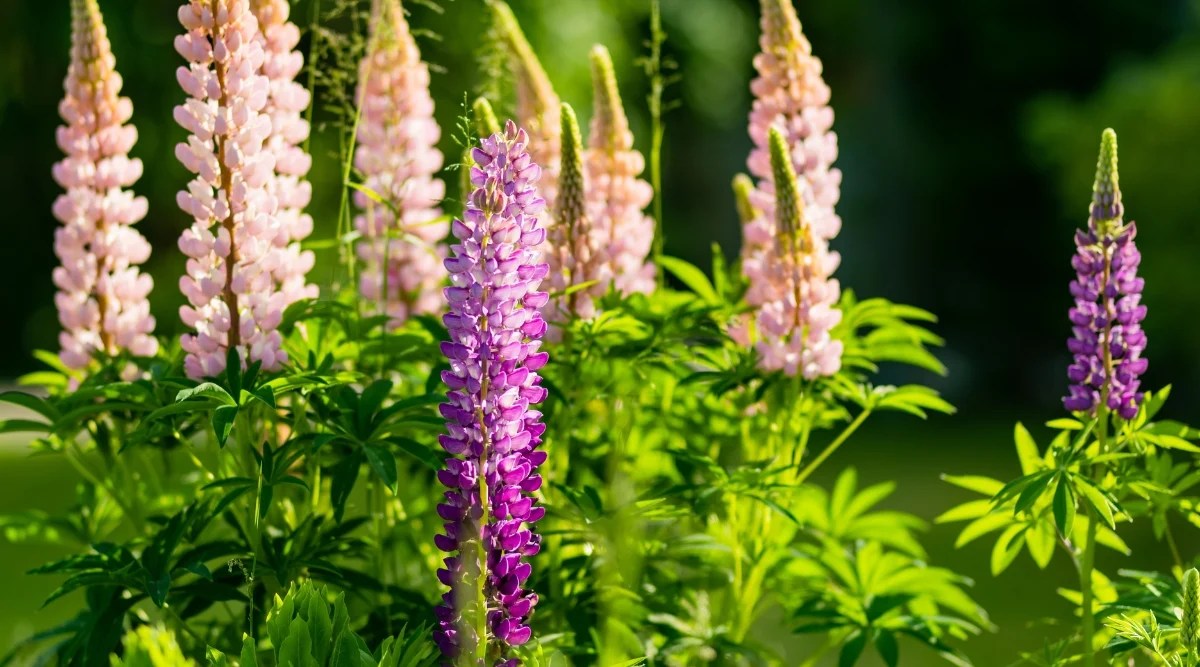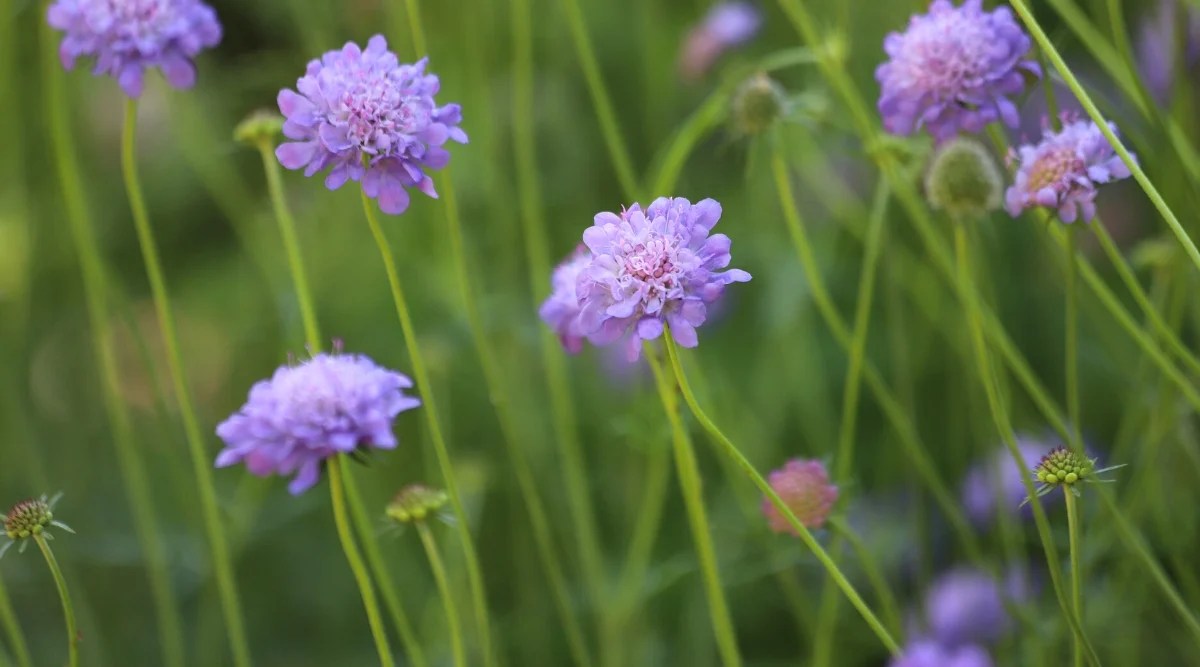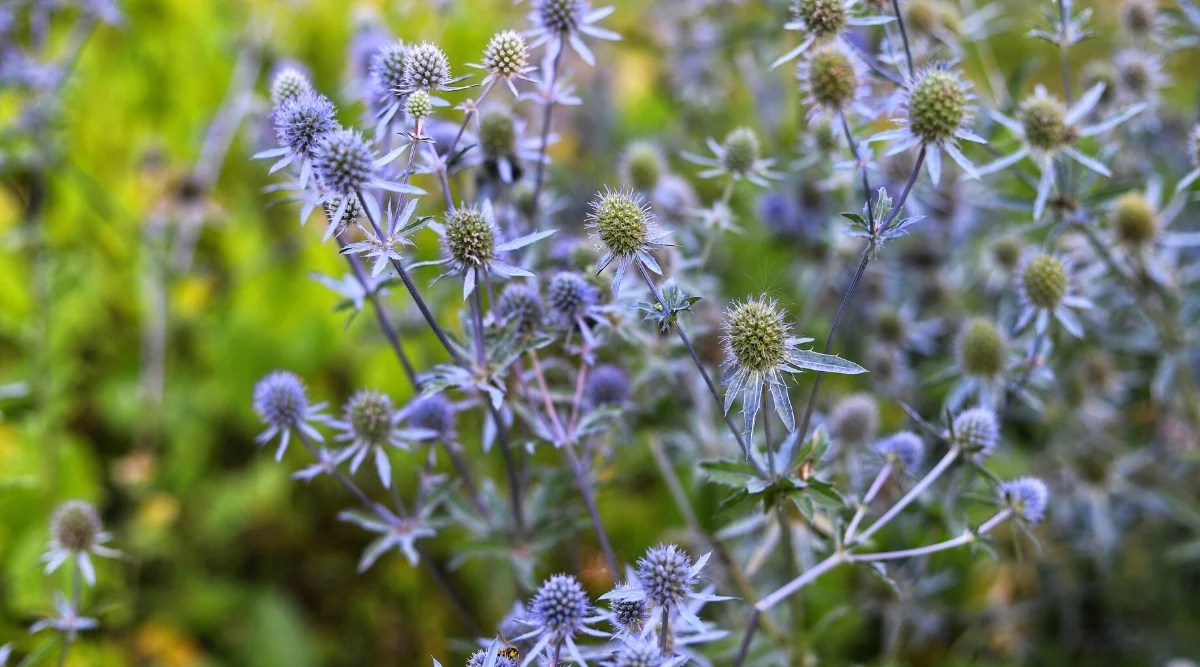bloom
Do you have an country of your garden that you do n’t know what to do with ? Have you thought of adding some ego - seed perennial to that region so you do n’t have to do much ? If so , garden expert Jill Drago offers 31 ego - seed perennial choice for your garden .
capacity

Self - seeding perennial make a beautiful garden feel effortless . works that self - seed are those where the heyday bring about come heads that will drop or float on the wind and sow themselves into your ground , eventually growing new plants to fill your garden .
These plants can be just as impactful as yearly flowers , but they will repay year after year with less work . Here are31 ego - seeding perennialsfor your garden !
Bachelor’s Button
As a small perennial with superb , impactful coloring , thebachelor ’s buttonis a slap-up choice . This plant also goes by the name of mountain cornflower . Whichever name you choose , this industrial plant is a looker .
Bachelor ’s clit bring out lovely gentle unripened foliage in an attractive mounded shape . The brightly color flower have a ruby - pink center besiege by blue frilly petals . They can even be added as a colorful edible garnish to summer recipes !
This perennial is a rapid broadcaster by seed and rootstock . as luck would have it , it is n’t invasive . you may deadhead spent blossoms to forestall excessive airing by ego - seeding .
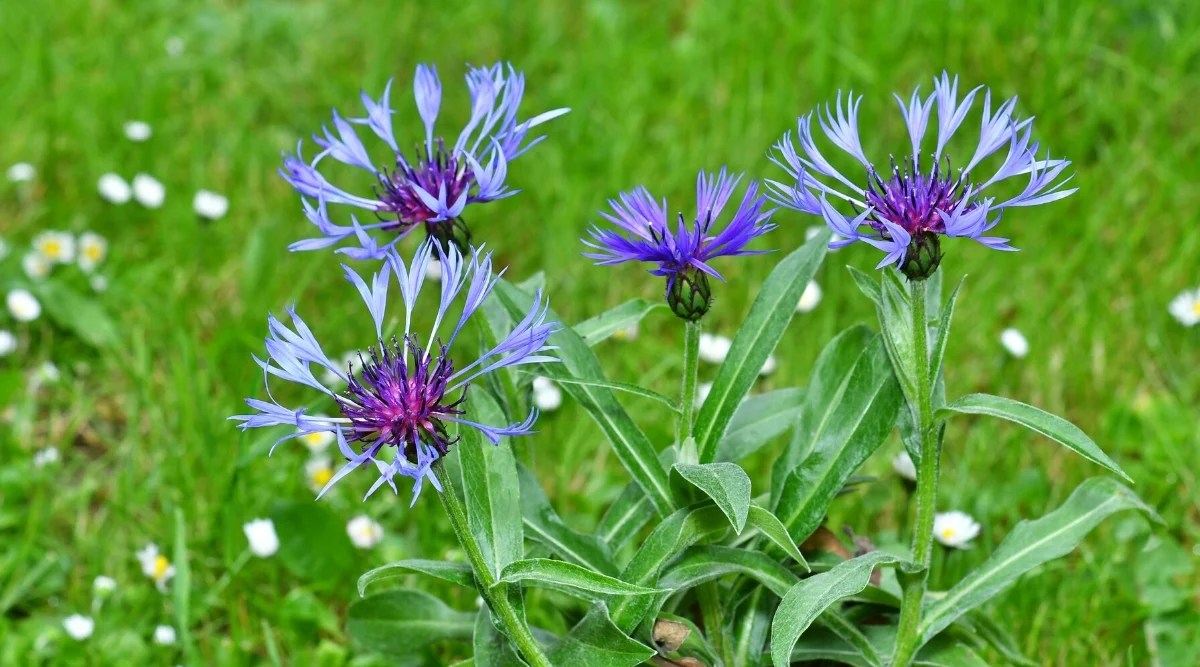
Beebalm
Beebalmhas a reputation as both an herb and an decorative perennial . This plant grows into beautiful mound of sinister unripe , fizgig - shaped foliage . The flowers themselves are small when find individually .
However , an copiousness of red or vivid pink heyday appears on top of passing showy bracts . This colorful show can last up to 2 calendar month in your garden . Cut your beebalm back to the land at the end of the growing season to help promote goodish maturation in the next time of year .
Beebalm is a fertile spreader and will self - seminal fluid if you do not deadhead the spent blossoms . To check your beebalm continue to come along attractive , divide your clustering every few days . If you begin to notice that the center of the plant is go bad or looking sparse , it ’s time to divide .
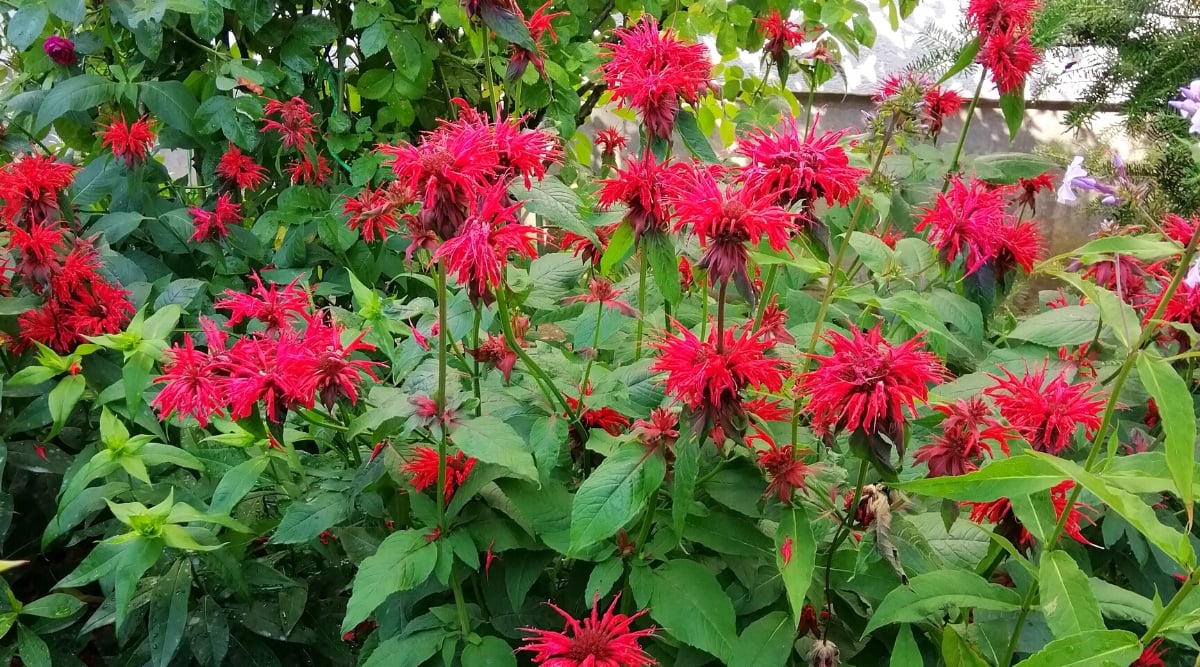
Black-Eyed Susan
The calamitous - eyed Susan is a classic garden plant . The brilliant jaundiced or bi - dark flowers have gain their repute for being as secure as they are beautiful . The prosperous petal are arranged neatly around a cryptic chocolate eye , creating a sun - like appearance . The foliage is an attractive shade of green with shaft - form leave .
Black - eyed susansare very depleted - criminal maintenance industrial plant . They are drought and heat tolerant and are fantastically forgiving . If you do not desire this plant to self - seeded player , deadhead the spent blossoms and expect more flush later in the yr .
If you are exposed to growing more black - eyed Susans in your garden , allow the flowers to mature on the shank . The seeds will appeal birds to your garden in the fall and will fall into your garden and produce Modern industrial plant .
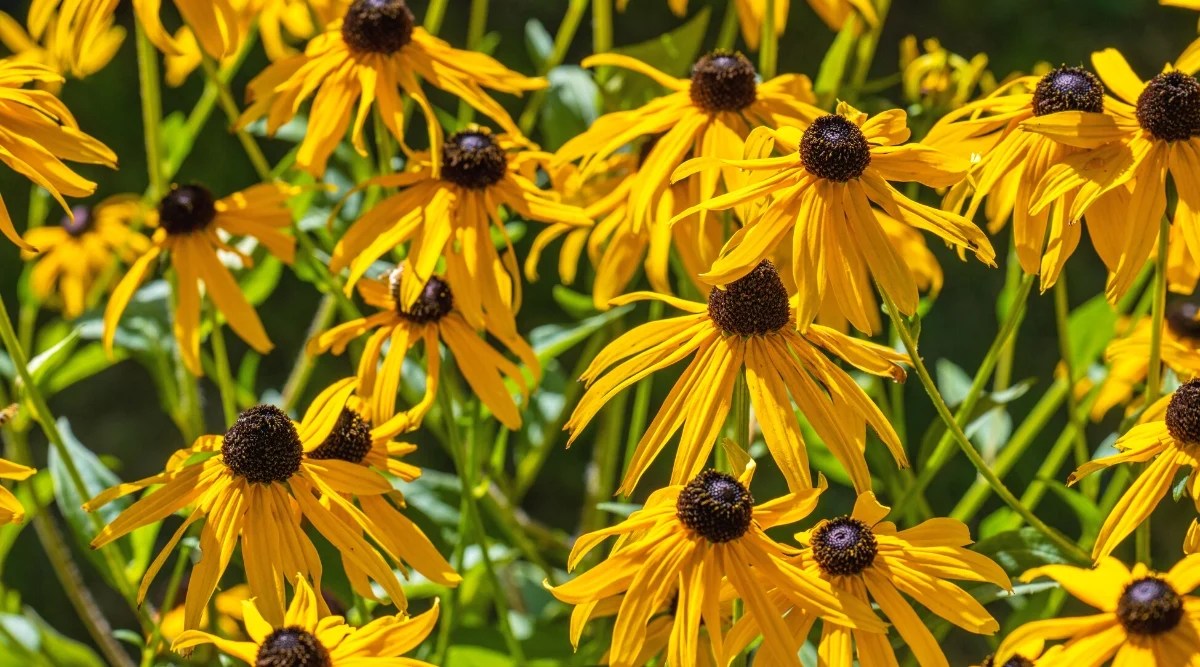
Bleeding Heart
A beautiful and classic garden perennial , bleeding heartwill add unique splendor to your garden . The heart and soul - shaped flower fine dangle from arching stems in shades of pinkish or clean .
The leaf is equally attractive , produce deep fleeceable dual-lane leaves . Bleeding hearts will bloom from spring to come down in nerveless climates . However , if you survive in a warmer mood , this plant will begin to fade in the heat of the summertime .
leech heart will spread out through rhizomes , but it will also ego - seed . Do not cut your bleeding heart ’s back if you wish for them to ego - source and bring about fresh baby bleed heart plants .

Butterfly Weed
butterfly stroke sess , also call up orange milkweed , doubles as a arresting perennial and a important part of the Danaus plexippus butterfly ’s dieting . This perennial acquire gorgeously bright orangish flowers that will bloom in your garden all summer long . butterfly stroke Mary Jane is an herbaceous perennial with sturdy base and leaves to support this floriferous perennial .
In the fall , these blooms will give way to attractive seed pods . If you do not remove these seed pods , they will finally spread out and break up their seeds throughout your garden .
Butterfly green goddess will naturalise attractively in your garden if you allow them to self - seed . see you allow quite a little of distance because this perennial dish can take over . Get quick for thebutterfly show !

Columbine
Columbineis a stunning and unique herbaceous perennial . profoundly trimmed , fondness - shaped leaves form an attractive mound , while the flowers are on svelte stems . They will blossom in the early summer in shades of aristocratical , red , pink , white-hot , purple , or yellow-bellied . Columbine will struggle with the heating system in the mid - summer , so you should cut the plant to the primer .
Columbine is pretty low - sustainment . It is tolerant of dissimilar sunlight exposures as well as soil types . When the blossoms set out to fade , snip the stem if you do n’t require them to reproduce . If you allow the salad days to mature on the stem , the works will ego - seed into the garden bring out many Tennessean works .
This can be ready to hand since Columbine lean to be a shorter - know perennial , and self - sowing keep a vigorous display of healthy , young plant life appear yearly .
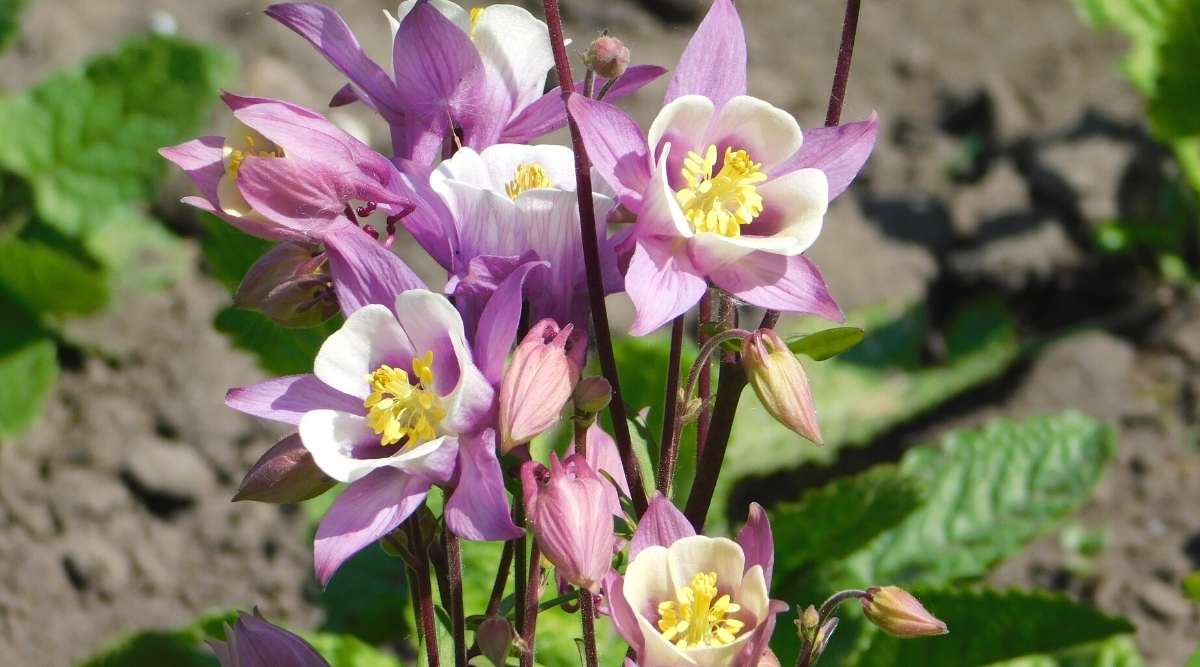
Coneflower
Coneflowers , or echinacea , are a welcome sight to any nurseryman . These tough perennials occur in an array of brightly colored blooms that will fill your garden all summertime . The colorful flower petal will wall a deep brown or orangish cone , where the seeds will form . They bloom on tall set stem which rise out of lance - work leaf .
Coneflowersare drought and heat patient of once established in your garden . As the flowers suppurate , the flower petal will drop , and the seed will become more robust and finally fall to the land .
you may collect the seeds or allow the young plant to grow where the seeds lay . If you do not wish for this to bump , do not interest ! You will have plenty of time to deadhead the old flush before the seeds drop .

Coreopsis
Coreopsis , or tickseed , is a brilliantly colored perennial with fern - comparable foliage . The blossom tend to be golden chickenhearted , orange , or reddened . However , there are a few pinkish varieties on the mart . The foliation is bushy and full .
The tickseed flowers may be small , but there are so many of them it will not make a difference . These flowers are daisy - like and have a frilly bound to the petals .
tick-weed seedsgrow into tough plants . render planting it in your garden borders or perennial gardens in groupings for a flashy display . After the first bloom , you could cut back the whole plant life back or deadhead the flower to promote a second blossom . If you permit the blossom to mature on the stem , they will produce seeds , and the plant will proceed to take up more blank space in your garden .

Cushion Spurge
If you are attend for a jazzy flora for your border gardens , cushion spurge may be it ! Thisspecies of euphorbiais elegant . It grow in an attractive mounded shape and acquire yellowed blossom which are flat and not very showy . However , their bright flower petal are very long - lasting and , of course , are the cay to ego - seeding . In the declivity , the cushion spurge has colorful fall foliation .
you could sense free to deadhead pass flush as you wish . Letting your flower mature on the plant will increase the potential bonnet of your cushion spurge ego - seeding and bring forth plants that will satisfy your garden .
Delphinium
Delphiniumis an graceful plant that you canstart from seminal fluid . These improbable flowers amount in shades of blueish , white , pink , and purpleness . Delphinium is a suddenly - live perennial that can be annual or biennial , depending on where you live . The flower bloom in clusters on tall stems in the late springtime and early summertime . Theyattract hummingbirdsand other pollinators . The leaves are late green and attractively large .
Delphinium will self - seed into your garden if you do not deadhead the blossoms , although efflorescence acquire from self - seeding by a named cultivar will often become a dissimilar color than the parent plant .
It is very considerate of the delphinium plants to do this for us since these perennial be given to be short - lived . This will keep the beautiful prime coming in one phase or another for years to come and will allow your garden to adapt course over meter !

Forget-Me-Not
draw a blank - me - notis a sweet and small plant that packs a punch in the flower section . The simple spicy flowers may be small , but they are copious and create a dazzling display in former spring and early summer . The foliage of forget - me - not is low - growing and can be evergreen in warmer mood .
This perennial is sensational when planted in a grouping , which is easy to do if you admit it to self - semen . bury - me - not is considered encroaching in some area . Take caution when choosing a planting site to ensure it remain in checkout . Then , leave the flowers to maturate on the plant , and you will have stack of seminal fluid to produce new leave - me - nots .
Foxglove
A stunning plant to add height to your perennial gardens , foxgloveproduces dramatic tube - shaped flowers that will be the start of your flower beds . These flowers are available in an raiment of colours from peach to blank and many shades of purple and pink . There are even spectacular bicolor combination as well . These flowers form on tall stems which wax from a rosette of leaves .
Foxglove is a biennial that will only flow around for two rise time of year . The full news is this works produces enough seed to keep repopulating itself ( so it ’s almost a recurrent ) . Foxglove is considered invasive in some areas .
This can be controlled by deadheading the flowers before they go to semen . If you wish well to amass the seed , this is another dandy way to control the digitalis without rent it take over .
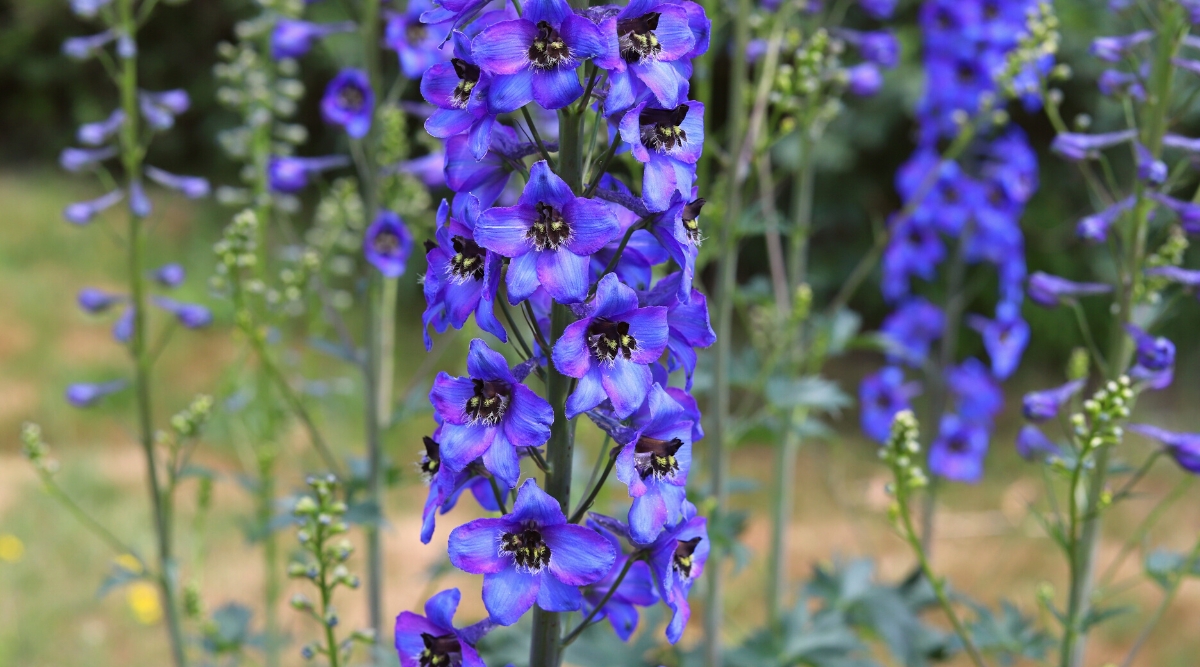
Globe Thistle
Theglobe thistleis a tough plant that bring on gorgeous world - shape heyday . Its foliage is slightly prickly but not as rough as it seem . This prickly foliage helps to keep predatory animal forth . The globe - shaped flowers are clump of tiny violet or bloodless flowers . When the petals drop , you will be leave with seed heads that are equally as interesting .
When these ejaculate heads begin to dry out , they will spread , and seeds will diminish out onto your soil and germinate easy . If you wish to collect seed , this is evenhandedly easygoing to do . just snip the seed head and collect them in a grip and allow them to dry out completely before engraft in the spring .
Hellebore
Lenten rosebush , also screw ashellebores , are evergreen shade - hump perennial . This perennial blooms in late winter or former spring and is a welcome stack to gardener at the earliest times of the garden year . Their flush are unique and will either be bowl - shaped or nodding , and they amount in many pastel gloss but also a deep purple which is nearly pitch-dark .
Hellebores will ego - seed directly into your garden when left to their own machine . Depending on the variety you are growing , you may notice the blossoms on the fresh hellebore plant are not quite the same shade as the parent plant .
you’re able to collect the seeds in an envelope and plant them indoors over the winter or straight off in the soil yourself in the spring . This will allow you to control where your hellebore grows and how much it will take over an region .
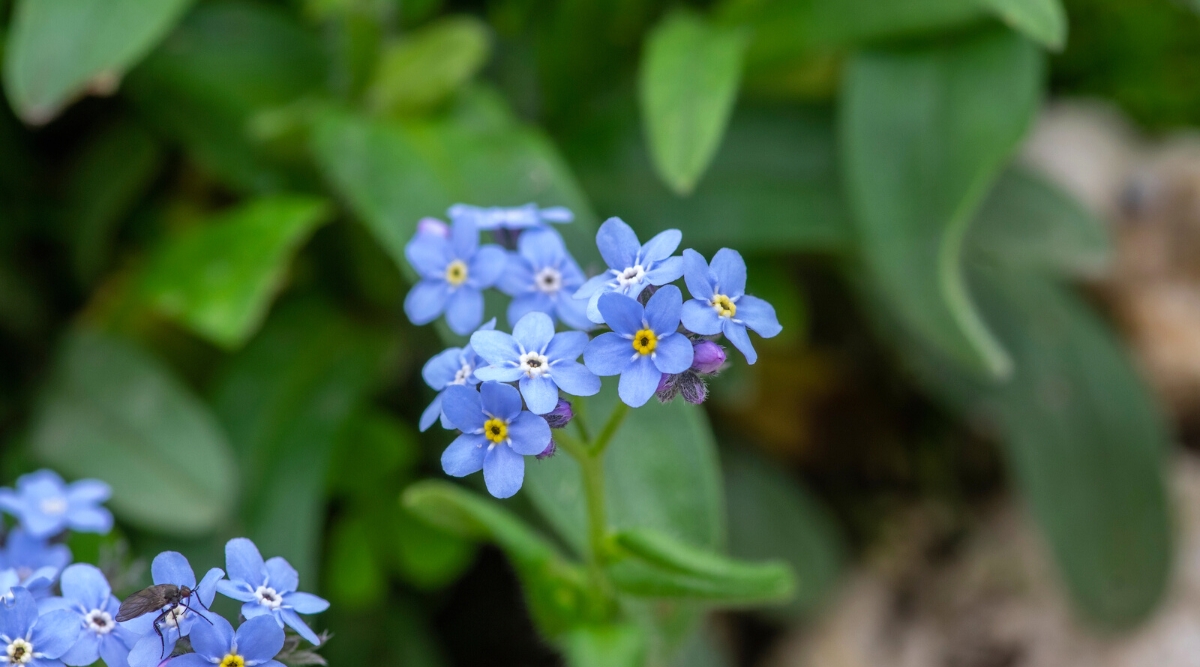
Hollyhock
A cottage garden classic , thehollyhockis a perfect addition to a garden that needs a splash of color and a fleck of height . There are a pot of different varieties that vary in height as well ascolor . you’re able to also find althaea with single flowers as well as three-fold heyday . Whichever salmagundi you take , these plants will produce improbable halt with beautiful flowers put all around the stem .
This perennial will self - seed readily by just flatten its seeds into the soil . If you wish to contain the ranch of your hollyhocks , turn off them back after flowering . Aside from watering , hollyhocks do n’t take much as far as maintenance is required . It is recommended that you substantiate your hollyhocks with a stake or trellis .
Lady’s Mantle
Primarily grown for its foliage , lady ’s drapery is a beautiful herbaceous perennial perfect tense for your border or prime bed . The large green bequeath unfurl attractively , resulting in cutlet - edge leave that pull in raindrops . The blossom are not the most showy , but they make it in masses of yellow foamy clusters .
Many gardener will clip the fatigued flowers from the lady ’s mantle to neaten their gardens . If you give up these flowers to hang around , they will self - cum and increase the amount of ma’am ’s mantle in your garden in the next growing season .
Lamb’s Ear
Lamb ’s ear acquire lovely , delicate silver foliage , which is the primary focus of this works . However , it also give rise improbable majestic spindle of efflorescence , adding height and color to your former spring garden . The foliage resemble little lamb ’s ears in configuration and is very attractive when used in a cottage garden molding or any full sun flower bed .
These prime will ego - seed . Deadheading them will not only stop the ego - seeding , but it will also elevate more vigorous foliar ontogenesis . Either direction , this plant will spread nicely throughout your garden .
Liatris
This somewhat recurrent alsogoes by the name gayfeather . I imagine it has this name because the regal prime front like plumes of feathers sit on top of long grass - alike foliage . As the magniloquent spikes of bloom pass , the foliation will remain bright light-green and attractive until the first frost .
Deadhead genus Liatris on a regular basis to keep the plants flower as well as to prevent some self - seeding . Leaving the flower on the plant will provide birds with food in the fall and will observe some summit in your gardens when there is not much get out to be admired .
Lupine
lupine are genuinely one - of - a - kind plants . Their foliage is palmately shared out and beautiful , but this plant ’s beautiful blooms . Most notably known for the purple varieties , there are also pink , lily-white and yellow salmagundi available . These bloom rise as bold spikes of tightly packed flowers .
Lupines will self - source in your garden . Simply deadhead the spent blossoms once the flush pass . The foliage remains attractive through the grow time of year , so trim the stem back to a point where the stay leave veil it .
Masterwort
Masterwort is a gorgeous accent flora to your borders and flower seam . This lower - growing perennial easy make friends with nearby plants , while its pincushion flowers summate a pop of color . These flowers can be get hold in pinkish , red , and white shade . The foliage is evenly attractive with deep green palmate farewell .
To uphold the wellness of your astrantia plants , you should divide them every few age . Masterwort will ego - ejaculate directly into your soil . Deadheading is the best way of life to prevent this .
Milky Bellflower
This stunning variety of campanula is large and long - lived ! Position milky campanula in the back of your blossom bed or in a sunny cottage foundation plant life , and you will be the talk of the town of the neighborhood . Growing up to 5 feet tall , the milky bellflower is multibranched , with each branch producing dozens of clean or light regal flowers .
This delightfullylow - maintenance perennialdoes not attract wildlife nor demand much as far as maintenance survive aside from damp soil . Milky bellflower will spread rather quickly in the right growing conditions . Be prepared for more whitish bellflower or to deadhead their spend blossoms .
New England Aster
You may knowNew England astersfrom the show they put on every fall . In my opinion , growing New England aster makes a much more beautiful ( and scotch ) accession to your garden than purchasing pot mamma class after year .
The efflorescence on the New England aster are majestic with yellow shopping mall . The leafage is immature and will be present throughout the mature time of year .
Pinch your asters back before July 4th . This will help give your aster a bushy show while promoting more blooms . When the show is over , either deadhead the blossoms or leave them to self - seed in your garden .
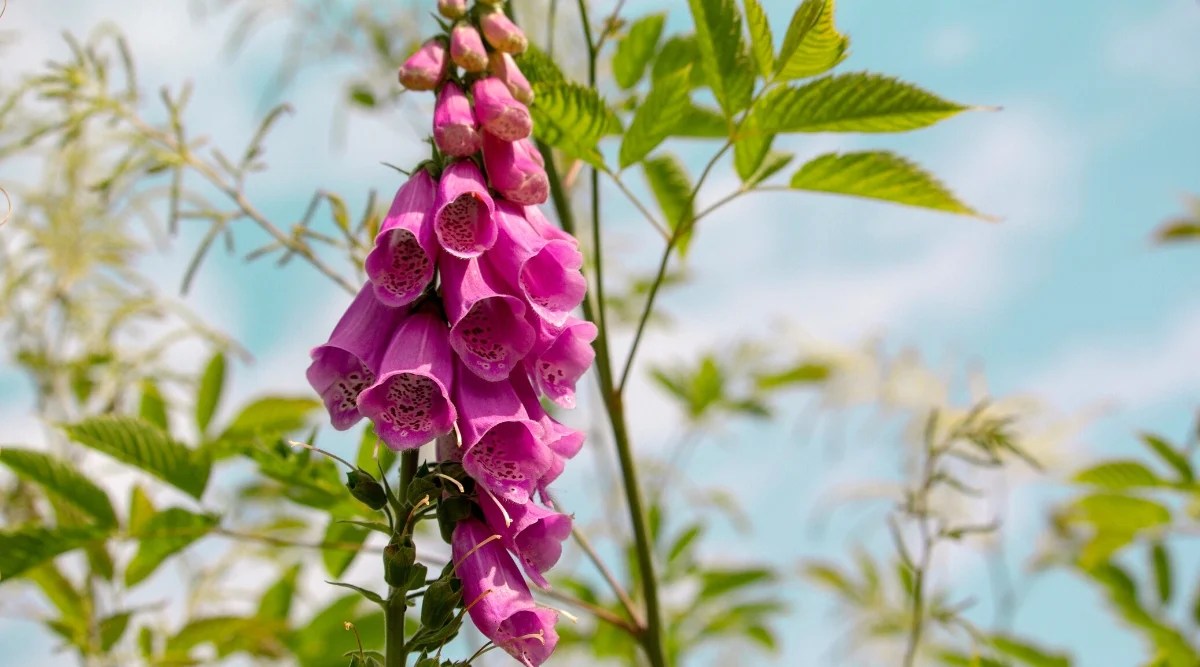
Primrose
Evening primroseis a stunningly showy perennial that flower throughout the eventide time of day . The flowers of the even primrose are softly pastel - colored with yellow centers . This perennial has a sprawl nature that lend itself nicely to living as a groundcover or an addition to your flower bed .
When the evening primrose flowers fall out , they will be supercede with seed pods , each with 4 wing that will serve in carrying the seed off to their landing place space . Evening primula can take over a place nicely , so opt an area you wish well to naturalise or be prepared to deadhead !
Rose Campion
Rose Campion is a beautiful perennial that deserves more attention . Its leaf is soft and silver . The sturdy stem support belittled yet brightly non-white flowers of white or magenta .
Rose catchfly is tolerant of hotness , drought , and pathetic grunge , making growing it extremely well-to-do . The only requirement for rose campion is that the stain is well - draining . This plant does not like give birth lactating invertebrate foot .
Deadheading develop campion throughout the time of year will promote more flowering . However , this perennial will reseed beautifully , creating a swath of beautiful plants .
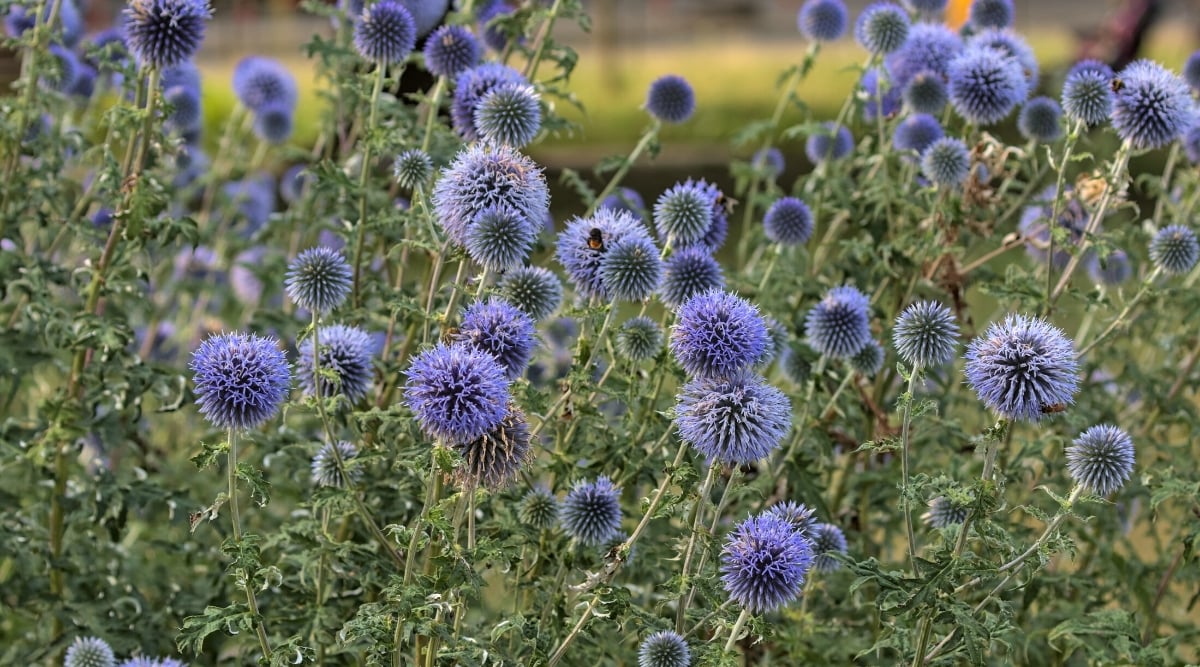
Scabiosa
Scabiosa , orpincushion flower , is a great addition to your gardens if you desire a long - bloom perennial . It is crazy easy to mature . The flower on the pincushion flower can be violet , pinkish , or red .
Each flower can hit up to two inch in diam , create quite the display lasting through summertime and into fall . These flowers hover over mounded green and lobate leaves with a more or less - weedy appearing that plays well in cottage gardens .
This perennial will self - seed and arise new seedlings each springiness . Deadheading this plant can be quite a task due to the number of flowers . apply your garden shear to give this perennial a haircut when the prime get to fade . This can promote newfangled blooms in the same time of year .

Sea Holly
ocean hollyis a stunningly decorative perennial that is as tough as it is interesting . This industrial plant has small aristocratic flower that are set inside showy silver bracts . Sea holly grows best in gay and sandy garden , piddle it a great coastal plant ! Do n’t forget to plant ocean holly in your cut flower gardens .
When the efflorescence grow , they will make seed heads that will sit in the flora ’s bracts before being blown about in the wind . However , deadheading will keep the flower show decease even longer into the growing time of year .
Spider Flower
Spider flower is technically an one-year , but it ego - come so prolifically that it produce the results of a perennial . These tall flowers can add some dramatic event to your garden . strain up to heights of 4 feet , the stems will produce attractive leafage and magnanimous peak clump .
These flower clusters can grow up to 6 inches in diameter and come in shades of pinkish or blanched . Each pocket-sized efflorescence has long stamen , giving the wanderer flower a fun look .
The flower petal of the wanderer flower will twist into long germ pods , which supply pastime even when the temperature set down . These germ will go down to the territory and produce new genus Cleome plant the following spring .

Sweet William
Sweet William is a sleep with perennial with beautiful clusters of brightly colored flat flowers . This plant is a two-year or short - lived perennial , but the good news is its seed can make unexampled plants and give the appearing of a long - living perennial .
The foliage of sweet william ranges from pale green to dark green and is arranged on set stems . The flowers hail in shades of white , pinkish , and ruby .
Deadheading your sweet William will advance more blooming while also promoting plant health . However , ego - seeding will help keep your garden full of honeyed William plants !

Tall Verbena
Tallverbena , which can be grow as an annual in coolheaded mood , is an airy and tall perennial for your border garden and flower beds .
The very tall stems can make up to 6 feet tall and back up clusters of small imperial flowers . This works adds proportion and beauty to the back of your gardens by providing meridian and color without the mass .
Tall vervain is invasive in some areas , so before you plant it , inquiry to ensure you will not harm your local ecosystem . If you plant tall verbena , you’re able to master its gap by deadheading the flowers on a regular basis . If you care for it to spread slimly , tall verbena well self - seed .

Turtlehead
In the belated summertime , masses of turtlehead flowers are a sight to behold . These plants will attain up to 3 foundation tall and grow small spikes of pinkish or white bloom . The upright piano stems also support dark green leaves that stay attractive throughout the grow season .
Turtlehead will diffuse through ego - seeding and is specially attractive when plant in large grouping . This is a very depleted - maintenance plant as long as the soil does not dry out .
Yarrow
Grown primarily as a wildflower with exceptional perennial performance , yarrow is a big addition to any full Dominicus garden . Yarrow has attractive fernlike leaves that are light green or even silvery unripened in color .
The flowers of the yarrow works appear in clump of tiny flowers that come in an array of colors that will fill your garden for a lengthy period of prison term .
These pretty flower will eventually set seed and sow right into your garden soil . To advertise further blooming or to keep the dissemination of your yarrow by source , merely deadhead your spent peak .

Final Thoughts
Before constitute any ego - seed perennials in your garden , it is always a good idea to ensure they are not encroaching in your sphere . However , not all self - seed perennials will be encroaching ! Embracing perennials that will self - seed is an fantabulous way to naturalize larger sphere in your garden whileadding beautiful flowers and color to your landscape painting .
